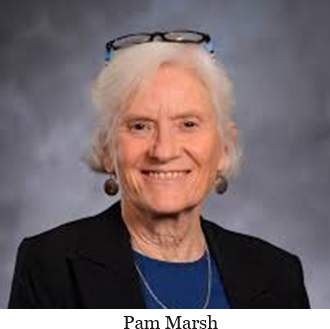“What will be done with massive batteries after their lifespan?”
As legislators and government regulators create more requirements for electric transportation, examples of enthusiasm outpacing reality are beginning to pile up and manifest in situations that pit one environmentalist value against another. One such example is the
Thacker Pass lithium mine on the Nevada-Oregon border which is expected to provide much needed lithium for batteries to please one faction of environmentalists, yet is alleged by another faction of environmentalists to be disruptive to the environment.
The latest in questionable energy policy is
HB 4015 which permits a developer of a facility or the governing body of a local government after consulting with the developer to elect to defer regulatory authority to the Energy Facility Siting Council for the siting of a battery energy storage system. According to analysts, this would make it easier to site battery energy storage systems. It was passed by the legislature last session and recently signed into law by Governor Kotek.
HB 4015 has no sponsor, but identifies at the request of Representative Pam Marsh (D-Ashland).
Unlike dams, the efficiency of windmills and solar installations fluctuates greatly depending on the weather. They require massive storage batteries to compensate for times when the output cannot meet the need. According to experts, industrial batteries are highly toxic and vulnerable to leakage. The bill allows local communities to give up their authority for approving locations, allowing the Oregon Energy Siting Council to rubber stamp locations. Some opponents say that the Council has a questionable history of project approvals in recent years.
A D V E R T I S E M E N T

A D V E R T I S E M E N T
According to legislative watchdog Les Poole, "There are many assumptions and unanswered questions regarding the viability and safety of placing toxic batteries on our lands. The Siting Council has a history of approving large projects that have underperformed and/or created unacceptable environmental impacts. Approval of HB 4015 would invite both practical and legal battles." He cites
1000 Friends of Oregon vs Jackson County as an example.
Poole continued, "The promoters of this legislation and the Siting Council apparently believe the need for this legislation is justified because solar facilities will be approved on thousands of acres of farmland, much which is zoned EFU. It's a legally flawed concept that defies the spirit and purpose of the Oregon Land Use Plan." Poole cited another current legal battle taking place in Umatilla County at the Nolan Hills Transmission Project.
"What will be done with massive batteries after their lifespan?" Poole asks, rhetorically. "Where will they be stored, and what risks are there in transporting them? Will another situation occur where there's a lack of a permanent storage facility, reminiscent of the Umatilla Ordinance Depot and Yucca Mountain/Hanford nuclear waste depositories?
--Staff Reports| Post Date: 2024-04-07 19:40:35 | Last Update: 2024-04-07 21:34:08 |







